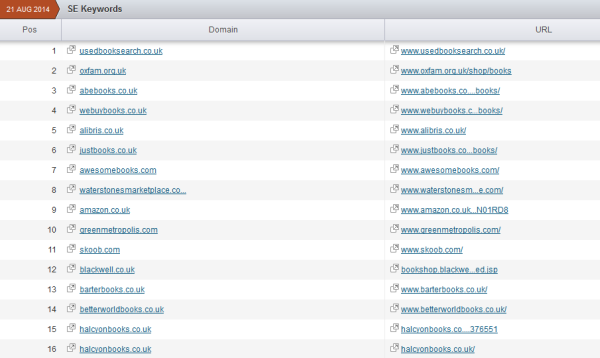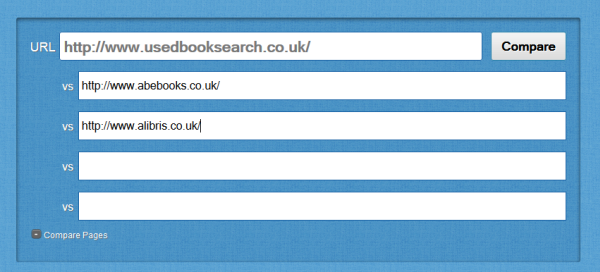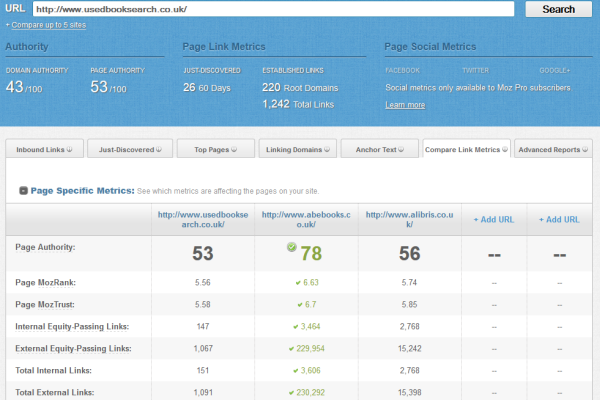A beginner’s guide to SEO competitor analysis
If you’re launching a new site, finding out who your competitors are and understanding what they’re doing online is a must. By knowing what your rivals are doing in the search engine optimisation (SEO) and social media space, you’ll not only get a better sense of their online marketing strategy and what’s working for them, but also where you stand and how much work you need to do to outrank them.
This is something that you can achieve with proper SEO competitive analysis which can help shed light on your competitors’ techniques or the platforms where they are successfully attracting customers in your niche.
There are hundreds of articles and resources on how to optimise a site, what SEO mistakes to avoid and so on, but not so many on competitive analysis. Why? Because 1) It’s not as “sexy” as a topic like “the Greggs logo being hijacked” and 2) It’s a lot like flossing – everyone agrees it’s important but few do it.
However, industry experts agree that competitive analysis is a critical part of search marketing success, so important that it is linked to higher conversions meaning more sales.
Again, why? Because you’ll get extremely valuable information and insights on your competitors’…
- Links: Find out where your rivals have backlinks and you don’t.
- Content: Discover how they are reaching your audience through content.
- Site structure: Check how your competitors have structured their site, and look at how search crawlers see their sites as compared to yours.
Ok, let’s dive in and see how you can perform your own competitive SEO analysis.
Four simple steps to perform a SEO competitor analysis
1. Identify your competitors
This is very helpful if you’re just starting out with a new website and want to find out who you’re competing against. This list of competitors doesn’t just include the businesses that offer the same products or services as you but any site that competes with you in search results for your target keywords.
So what you need to do is to check who ranks for your keywords in search engines. Here’s how…
First, do a keyword research, if you haven’t already, and prepare a list of your most powerful keywords and keyword variations that have the potential to send you targeted visitors.
Next, check which sites are ranking well for each of your top keywords. A simple yet not so time-efficient way to find your online competitors is to go to Google and run a search for your top keywords.
For example, say you’re selling second hand books. A quick search on Google will show you the top sites competing for the keyword “buy second hand books”:
You can also use a tool like SEMrush to get your list of competitors for each keyword:
An additional way to find competitors is to sign up for Google Alerts to monitor mentions of your keywords, which may unearth other potential competitors.
Next, create spreadsheets with your top keywords and your competitors for each keyword. This list will ultimately include relevant keywords that you would like to rank for in search engines and your competitors’ position in search engine results pages (SERPs). As you go through this process, you’ll likely come across other keywords that your competitors are using which you might want to add to your list.
Sometimes you may get the sites of big brands like Amazon, especially if you’re targeting short and generic keywords like “buy books online”. Either go with more specific keywords or ignore these big brands for now because you’re just starting out and can’t compete with an established brand with a great reputation, years of experience and practice, and a huge budget.
In many cases you will see some sites appear in more than a list. They may be the real competitors as their appearance in different lists shows that they are also targeting these keywords; the same users you want and same niche you have. Now you have your list of real competitors.
2. Analyse their links
In this step you will get some insights into how your competitors are building their backlinks, including:
- How many links they have
- Which sites they’re coming from
- Which of their web pages are receiving most links
- What types of anchor text they’re using
Running a backlink analysis on your competitors helps you understand their link profile and why they’re ranking, as well as their strategies to acquire links. Plus, it gives you a tidy list of high opportunity links (if they can, why not you?).
A great tool to use in this part of your competitive analysis is Moz’s Open Site Explorer (OSE).
Ok, let’s assume that you are the owner of usedbooksearch.co.uk. Go the OSE and type your website address into the search bar:
Click on “Compare Pages” under the search box and add your top competitors:
Click “Compare” and you’ll be taken to the results of the comparison:
The default tab is “Compare Link Metrics” which shows you great insights into your competitors’:
- Total Links – The total number of links pointing to their sites, including internal links (links between your own pages) and external links (coming from other sites)
- Total External Links – The total number of links from other websites.
- Followed Linking Root Domains – This shows you how many unique websites (“linking root domains”) have links that Google counts for a site (follow links).
Of course, there are many other stats and information listed on this page, but these ones are the most important for this step.
3. Check their on-page SEO strategy
Analyse your competitors’ sites in detail to see how they’re optimising their web pages. Pay extra attention to the following elements:
- Title tags
- URLs structure
- Meta descriptions
- Header tags (H1, H2, H3 etc)
- Keyword positioning in content
- Content relevancy with targeted keywords
If you’re unfamiliar with some of these terms, before you continue make sure you read this guide on on-site SEO basics.
Two good tools you can use to quickly check page optimisation are SEOchat’s Page Comparison tool and Web page SEO analysis tool.
Here is some of the information that SEOchat’s comparison tool shows you:
Make sure you also take a closer look at their copy – pay attention to titles, calls-to-action, unique selling points, sign-up forms, the structure of the page etc. This can help you get a better understanding of how they’re optimising their pages but also how they’re enticing visitors to act.
4. Scan their social accounts and monitor mentions
A few months ago, the web was buzzing on the topic of social media signals and brand mentions and their importance in assessing a site’s authority. While it isn’t the case that social media influences SEO directly, being active on social media is critical and it can drive heaps of traffic to your site.
So in this step you might want to check and see if your competitors are actively using social media. Do they have a Wikipedia page? How do they rank for their own brand name and do their social profiles show up in the top search results? Have they even secured their brand across social networks? Do they distribute online video?
Run a simple search on Google, Facebook, Twitter for their brand name or you can use tools like Topsy and Socialmention to find out how active your competitors are on social media.
How to beat the competition
The only way you can beat your competitors is by gathering as much information as you can about them. Find out what they’re doing right and how they’re attracting customers, and then use this valuable information to overtake them.
When you’ve completed your SEO competitor analysis:
- Update your list of top competitors
- Update your list of keywords
- Use those promising new keywords you’ve discovered to create new pages on your site
Finally, don’t forget to revisit your SEO competitive analysis once every couple of months so you’re always up-to-date with what your competition is up to.
How do you stay abreast of your competitors’ SEO strategies?







